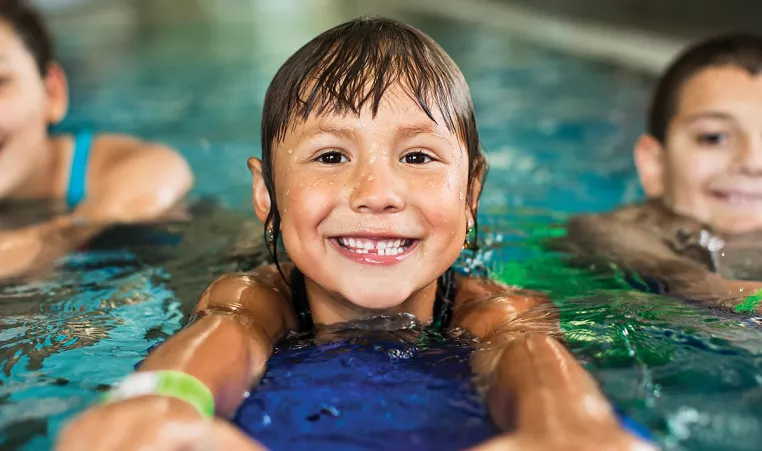6 Questions to Ask When Enrolling in Swimming Lessons for Your Kids

Drowning is the leading cause of death in children 1 to 4 years old, and the second leading cause of death in children 5 to 14 years old. Most drowning deaths are preventable, which is why swimming lessons are a life-saver. Take it from Addison and Cassidy’s dad, Josh Adams, who experienced a parent’s worst nightmare.
Survival Skills
A few years ago, Josh took Addison and Cassidy for a walk at the Fairhill Nature Center in Elkton, MD. They were standing on the edge of a creek, watching the water rush under an old bridge that had collapsed, while throwing rocks into the creek. Josh turned around to pick up more rocks and heard a splash. He turned to find that Cassidy was gone. She had fallen into the creek. Without hesitation, Josh jumped into the creek. “The water was ice cold and over my head. I couldn’t find Cassidy,” he says.
He jumped out of the water and ran to the other side of the bridge, but still didn’t see her. Then he heard screaming and followed it to find Cassidy stuck underneath the rocks, where she was floating on her back. He jumped in and brought her safely back to shore. “She learned how to do that [float on her back] at the YMCA. If it wasn’t for the YMCA and her swimming lessons, she probably wouldn’t be here today. It was the scariest day of our lives,” says Josh.
As Josh’s story illustrates, every child should learn how to swim.
No matter where you choose to sign your children up for swimming lessons, ask the following questions of any location:
- Are the swim instructors trained for the skill level and age of your child? You will want the instructor to be trained for the skill level and age of your child; and preferably, placed in a class with children similar to his or her age and skills if enrolling in group lessons. Also, as your child develops the basics, progressing to the next swim level should be based on the child’s swimming ability, not his or her age.
- Are the swim instructors in the pool with the children or on the deck of the pool giving instruction during lessons? Ideally, instructors should be in the water with the kids.
- Are the instructors certified in CPR and First Aid, in addition to having formal swim instructor training? All three of these are a must-have. Furthermore, not all life guards are trained swim instructors so ensure that the instructor is trained to give swim lessons.
- Can you watch the swim lessons? You should be able to observe the swim lessons.
- Does the program teach survival skills first, then strokes? Just as Josh described above, Cassidy knew how to float on her back and call for help. All children should be taught to do this first and foremost to ensure they are always safe.
- If taking group lessons, how large are the classes? Four to six students per instructor is recommended.
The YMCA introduced the concept of group swimming lessons in 1909. Now, each year in more than 2,000 pools across the country, the Y teaches more than a million children from all backgrounds invaluable water safety and swim skills.